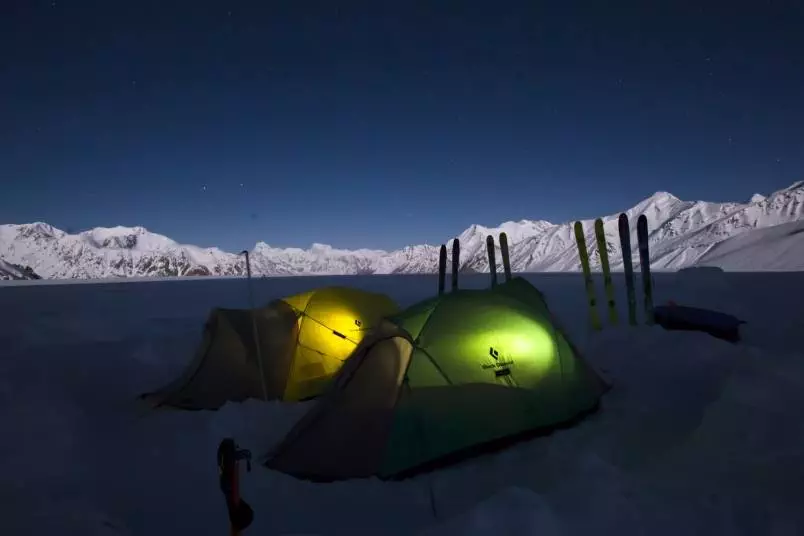Shelter can save your life in the mountains. By keeping the elements out and warmth in, spending the night in a tent is the best way to get the most comfortable sleep possible. Previously in this camping gear guide series, we’ve covered the importance of sleeping bags and sleeping pads, but those pieces of kit are not much use without an effective tent. Camping on hot summer nights may be the exception, but you’ll probably want something between you and the bugs. And when climbing into the alpine areas it’s best to be ready for rapid changes in the weather.

3-Season or 4-Season?
The first question one is asked when walking into an outdoor store looking for a tent is: what time of the year do you intend to go camping? If the answer is in the summer, spring or fall (and generally avoiding camping in the snow) then a quality 3-season tent will provide waterproof shelter with mesh panels for adequate ventilation. While these 3-season tents will withstand light downpours, structurally they are not geared to hold up against harsh storms or strong winds.
If you intend to camp on glaciers and cols when backcountry skiing and traversing mountain ranges, then a 4-season tent is the only choice. A 4-season tent uses more poles and stronger fabrics than their 3-season cousins. Ventilation is sacrificed in the name of protection by building them with fewer mesh panels and rain flies that extend to the ground. This makes them a poor choice when camping in warm weather as the air can feel hot and stuffy inside.
Single or Double-wall?
This choice again comes down to what sort of environment you intend on camping in. Single-wall tents are just that – one sturdy waterproof layer of fabric between you and the elements. This reduces weight and is quicker setup, particularly useful in the dark or in the middle of a blizzard. However, the reduced ventilation will mean increased condensation. For that reason, single-wall tents are better in cold, dry climates.
Double wall tents are the more common design of a separate tent body and rain fly. This offers the benefits of better ventilation while remaining waterproof but at the cost of increased weight. The rain fly also requires more diligent staking if you expect high winds through the night. A double-wall tent also has the benefit of increased storage space in the vestibules.

Shape
Unless you intend on camping at low elevations or out of the back of the car, then you’ll want to opt for a dome or arch/tunnel shape tent. They have less livable space than peak/cabin tents but are more capable of shedding snow and withstanding strong winds.
Other considerations
If you want your tent to last for many years it’s worth investing in a footprint. These are reinforced fabrics that sit on the ground to prevent abrasion damage and add an extra layer for waterproofing. Make sure the footprint is the right size, too big and they can channel water right under the tent.
Also, think about what sort of features you want inside the tent. Are there enough mesh pockets for your items or should you purchase a gear loft (a sort of gear hammock) to get that stuff off the floor? Do you need two doors or is one sufficient? Are you able to hang a lantern from the ceiling to reduce reliance on headlamps?
If you camp in the mountains year-round, over time it can be worth investing in two tents in order to sleep as comfortable as possible. Whichever style you choose, remember to keep your tent in good condition by repairing pinholes and tears promptly. Always allow your tent to dry sufficiently before storage. Apply sealant to the seams if water begins to make its way in.
The season is changing, so make sure you have the right tent for the incoming winter.
Written by: Vince Shuley


